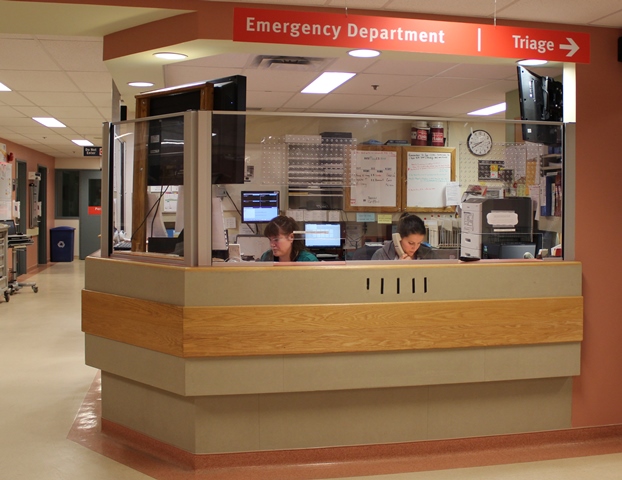
Over the past few years, many smaller community hospitals have struggled to keep their vital emergency departments (ED) adequately staffed. Across Ontario, rural communities have experienced a shortage of physicians which impacts 24-hour coverage of EDs.
Quinte Health Care (QHC) is a four hospital system in south-eastern Ontario with emergency departments in Belleville, Trenton, Picton and Bancroft. They have experienced these staffing pressures before, particularly during vacation months. This past spring the organization was looking at a larger number of uncovered emergency physician shifts into the summer and early fall, particularly at Trenton Memorial Hospital and North Hastings Hospital.
As with other smaller centres, QHC often relies on HealthForceOntario, an Ontario government program that links physicians working full-time in other Ontario hospitals with hospitals who need help covering shifts, to avoid temporarily closing emergency departments.
“The last thing anyone wants to see is an emergency department temporarily close their doors, but with increasing pressures on physician resources we realized that this was a real risk for QHC,” says Jeff Hohenkerk, Vice President at Quinte Health Care. “We operate more than one emergency department in smaller communities and are more acutely aware of this potential than most.”
Past experience with staffing shortages had shown that QHC was able to fill vacant shifts, through outreach to other hospitals and the resources of HealthForceOntario, although sometimes at the eleventh hour. In response, QHC chose to set-up an Incident Management System (IMS) structure to help deal with this reoccurring potential risk. The IMS team began by looking at the existing emergency preparedness policy and realized that it did not have enough detail to safely manage the complexity and impact of a temporary suspension of emergency services. The QHC IMS team set about changing this.
“In the world of emergency preparedness we know that most of the time people think it will never happen to them and therefore do not prepare, but QHC began working to be prepared in case we ever actually had to suspend services for one of our emergency departments for whatever reason, not just from potential physician shortage,” explains Melanie Maracle, QHC’s Manager of Corporate Risk.
By working through the process within an Incident Management System structure, QHC was quickly able to see a formal contingency plan taking shape. They continued their work by looking at the existing code orange and surge planning and realized that neighbouring emergency departments would be impacted with larger volumes of patients.
“QHC needed to make sure that volume increases at our other hospitals could be accommodated while maintaining responsive quality care for these higher acuity patients,” says Kim Fletcher, Interim Emergency Department /Primary Director.
Meetings were also held with local partners including Emergency Medical Services officials to plan how they would support and manage the potential suspension of emergency hospital services. Discussion with community and health care partners underscored the need for a formalized communication process as part of the contingency plan.
MORE: THE DAY THE EMERGENCY WARD CALLED 911
The complexity of communicating simultaneously to staff, the community, both municipal and provincial governments, stakeholders and health care partners within very specific time frames was a challenge. The solution was to create a comprehensive communications matrix that identified key contacts that needed to receive information, at what times during the service disruption and through what methods.
“It was important to have all of the internal and external partners identified along with the method and timing of the communication to effectively relay messages in a timely and efficient way – the communications matrix is now an important tool in our overall emergency preparedness processes,” says Susan Rowe, Senior Director of Communications at QHC.
With a substantive contingency plan developed and now in place, QHC continues to explore permanent options to solve emergency physician shortages and is excited to welcome several new ER physicians to their team this fall. Thankfully with the support of QHC physicians and HealthForceOntario, they have not had to put their new plan into action. However the process of planning before a service disruption allows hospitals adequate time to ensure that patients are safely cared for should an emergency closer actually occur.
“Interestingly, when we looked to other hospitals for assistance as we began planning there were so few resources available. Given our own experience we are very open to sharing any of the learning we have encapsulated during this process with other organizations facing a similar situation,” encourages Melanie Maracle.

